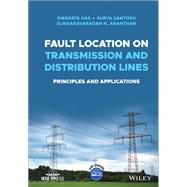This book provides readers with up-to-date coverage of fault location algorithms in transmission and distribution networks. The algorithms will help readers track down the exact location of a fault in the shortest possible time. Furthermore, voltage and current waveforms recorded by digital relays, digital fault recorders, and other intelligent electronic devices contain a wealth of information. Knowledge gained from analysing the fault data can help system operators understand what happened, why it happened and how it can be prevented from happening again. The book will help readers convert such raw data into useful information and improve power system performance and reliability.









